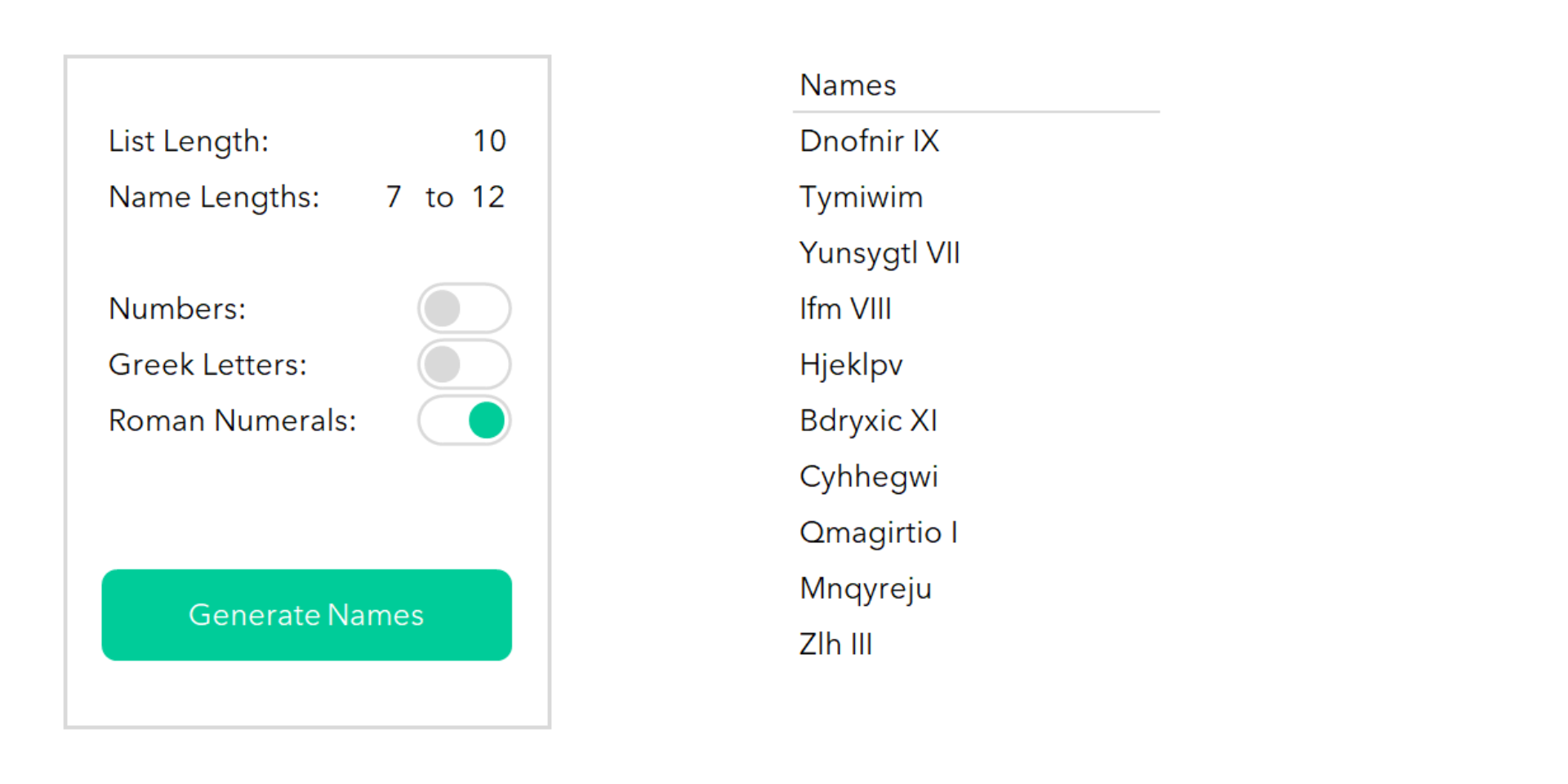Your cart is currently empty!
-
Random Name Generator
Photo by Brett Jordan on Unsplash
A few days ago, a Twitter friend of mine had a fun request:
I need a few planet names. Planet mcplanitface is already taken.
— Orcs Unlimited (@OrcsUnlimited) November 24, 2020Well, that’s all it took to spark the idea for the second installment of the We Made a Thing blog series: a Random Name Generator!
Description
To be clear, not all the “names” that the generator comes up with look anything like names, since they are just random characters. However, I did add a parameter so that each name will never have more than 4 consonants in a row; so it’s not completely random.
You can also tell it how long you want the names to be and if you want to include specific types of suffixes.

The point is not so much for the generator to create a bunch of perfect names that are just ready to go, but rather to create a bunch of things that kind of look like names. Then you, as a human, can make some small tweaks to turn those strings into great planet, city, or character names!
Basically, it’s designed to quickly get the ball rolling. It starts off the list on its own and you take on the role of the editor, which is much easier than creating names from scratch, if you ask me.
Anyway, I hope you enjoy it!
PLEASE NOTE: When you click on the link above, it will look like a Google Sheets file, but it is not one. The generator will only work if you click the download button in the top-right corner of Google Sheets screen, then open the downloaded file in your desktop version of Excel.
-
Hex Board Generator
Photo by Iker Urteaga on Unsplash
Board games aren’t my only hobby. In fact, one of my biggest hobbies is creating things in general. That naturally leads me to a love for designing board games, but I also occasionally make board-game-related things, which I’d like to share with you now!
I’ll probably add more as things pop into my head. If you have any requests, feel free to comment below.
Hex Board Generator

The Hex Tile Board Generator is something I created in Excel recently. As the name implies, it lets you create hex boards quickly, which you can then print off and use however you need. Here are a few things you can do with it:
- Edit the look and feel of up to 5 pre-defined tiles
- Set the width and height of the board
- Set the size of the tiles
- Set the size of the gap between tiles (including having no gap at all)
- Rotate the tiles to the horizontal or vertical position
- Randomly generate tiles based on approximate percent chances
- Quickly edit individual tiles after the board is created
PLEASE NOTE: When you click on the link above, it will look like a Google Sheets file, but it is not one. The generator only works as a macro-enabled Excel workbook. To use as one:
- Click the link above
- Navigate to File > Download > Microsoft Excel (.xlsm)
- Open the downloaded file in your desktop version of Excel